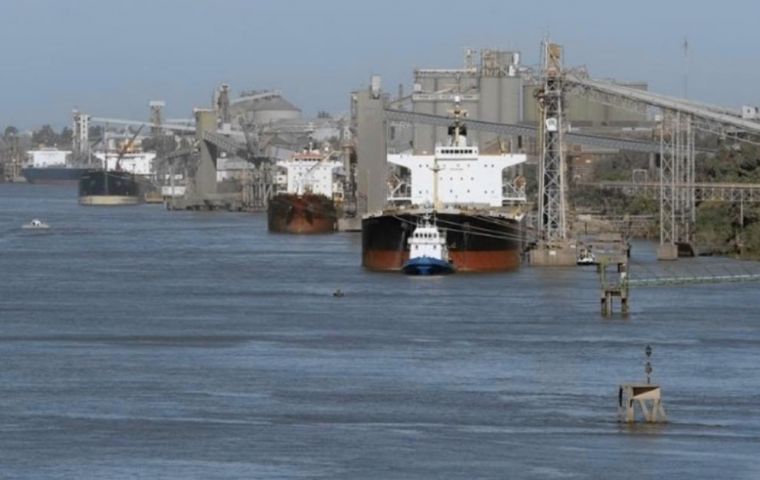MercoPress. South Atlantic News Agency
China competes in the dredging of Paraguay/Parana Waterway which handles 90 million tons of grains
 The Paraguay-Paraná Waterway is a structuring axis for international trade in Argentina, but also in neighboring countries
The Paraguay-Paraná Waterway is a structuring axis for international trade in Argentina, but also in neighboring countries A Chinese company entered the competition to manage a section of the Paraguay-Paraná Waterway, joining four European companies seeking to win the concession to deepen the draft and provide maintenance on approximately 1,238 kilometers of the river course beginning in 2021.
The Paraguay-Paraná Waterway is a structuring axis for international trade in Argentina, but also in neighboring countries, since the waterway crosses about 3,600 kilometers, also connecting Bolivia, Brazil, Paraguay, and Uruguay.
The Chinese Shanghai Dredging Company wishes to obtain the concession for the work between the confluence of the Paraná and Paraguay rivers and the Rio de la Plata. These gigantic infrastructure works will require an estimated investment of US$ 3.8 billion, according to the Rosário Stock Exchange.
The Chinese company will have to compete with the current dealership, the Belgian Jan De Nul, who has been in charge for 25 years, as well as with Dredging International, also from Belgium, and with Boskalis and Van Oord, from the Netherlands.
The stretch in question is 1,238 kilometers long, with approximately 25 exporting ports and a movement of grains that last year reached 92 million tons. About 80 million tons left the ports on ships and the rest on barges descending from the North loaded with Brazilian, Bolivian, and Paraguayan grains stated Alfredo Sesé, a Rosario stock exchange specialist
An estimated 80% of the 120 million tons of grains and cereals produced by Argentina are exported from the ports of Grande Rosario.
The main challenge is the improvement of the southern section which connects the ports to the Atlantic. Some sections must be deepened to allow the entry and exit of ships with greater cargo capacity. “The draft with normal water is 34 feet and the depth in critical passages is 36. It is expected to reach 42 feet in depth in specific areas,” said Sesé.




Top Comments
Disclaimer & comment rulesCommenting for this story is now closed.
If you have a Facebook account, become a fan and comment on our Facebook Page!